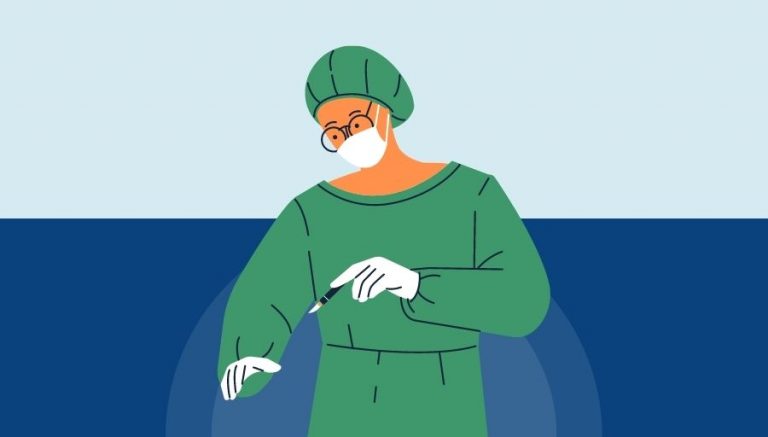How To Use CPT Code 78582
CPT 78582 describes the diagnostic procedure of pulmonary ventilation and perfusion imaging using nuclear medicine. This article will cover the description, procedure, qualifying circumstances, appropriate usage, documentation requirements, billing guidelines, historical information, similar codes and billing examples.
1. What is CPT Code 78582?
CPT 78582 is used to describe a diagnostic procedure that combines pulmonary ventilation and perfusion imaging using nuclear medicine. This procedure evaluates the circulation of air and blood within the patient’s lungs. It helps identify areas of the lung that are capable of ventilation and detects any blood clot that may be obstructing normal blood flow to a part of the lung.
2. Official Description
The official description of CPT code 78582 is: ‘Pulmonary ventilation (eg, aerosol or gas) and perfusion imaging.’
3. Procedure
- In this diagnostic procedure, the provider performs both pulmonary ventilation and perfusion imaging using nuclear medicine.
- For perfusion imaging, a radioactive tracer substance is injected into a vein in the arm. The tracer travels through the bloodstream and into the lungs.
- Images of the lungs are obtained using a gamma camera that can detect the gamma rays emitted by the radioactive tracer substance.
- For ventilation imaging, the patient inhales a radioactive tracer gas or mist through a mouthpiece or mask that covers the nose and mouth.
- Images of the lungs are obtained using a gamma camera that can detect the gamma rays emitted by the radioactive tracer gas.
- The images from the scan show areas of the lung that may have inadequate air circulation or blood flow.
- This combined study is commonly performed to evaluate conditions such as chronic obstructive pulmonary disease, pneumonia, bronchitis, or other lung infections.
4. Qualifying circumstances
CPT 78582 is used for patients who require pulmonary ventilation and perfusion imaging to evaluate their lung function and circulation. This procedure is typically performed when there is a suspicion of lung diseases or conditions that affect air and blood flow within the lungs. It may be ordered for patients with symptoms such as shortness of breath, chest pain, or suspected blood clots in the lungs.
5. When to use CPT code 78582
CPT code 78582 should be used when a provider performs both pulmonary ventilation and perfusion imaging using nuclear medicine. It is appropriate when evaluating lung function and circulation in patients with suspected lung diseases or conditions affecting air and blood flow within the lungs.
6. Documentation requirements
To support a claim for CPT 78582, the provider must document the following information:
- Reason for performing the procedure and the patient’s symptoms or suspected condition
- Details of the radioactive tracer substance used for perfusion imaging
- Method of administration for the radioactive tracer substance
- Details of the radioactive tracer gas or mist used for ventilation imaging
- Method of administration for the radioactive tracer gas or mist
- Date and time of the procedure
- Interpretation of the images obtained
- Signature of the provider performing the procedure
7. Billing guidelines
When billing for CPT 78582, ensure that the procedure includes both pulmonary ventilation and perfusion imaging using nuclear medicine. It is important to follow payer guidelines and append the appropriate modifiers, such as modifier 26 for the professional component or modifier TC for the technical component, if applicable. If reporting a global service where one provider performs both the professional and technical components, modifiers may not be necessary.
8. Historical information
CPT 78582 was added to the Current Procedural Terminology system on January 1, 2012. There have been no updates to the code since its addition.
9. Examples
- A patient with chronic obstructive pulmonary disease (COPD) undergoes pulmonary ventilation and perfusion imaging to assess the severity of their condition and identify areas of impaired lung function.
- A patient presents with symptoms of a possible pulmonary embolism, and pulmonary ventilation and perfusion imaging are performed to detect any blood clots in the lungs.
- A patient with suspected pneumonia undergoes pulmonary ventilation and perfusion imaging to evaluate the extent and location of the infection within the lungs.
- A patient with a history of lung cancer undergoes pulmonary ventilation and perfusion imaging to assess the effectiveness of their treatment and monitor for any recurrence or metastasis.
- A patient with unexplained shortness of breath undergoes pulmonary ventilation and perfusion imaging to investigate the cause of their symptoms and identify any abnormalities in lung function or circulation.


